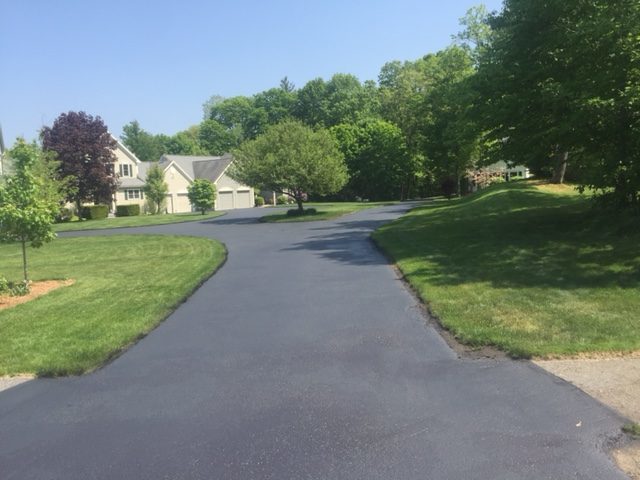Warm Mix Asphalt: A Lasting Solution for Sidewalk
Warm Mix Asphalt (HMA) has actually become a leading lasting selection for sidewalk remedies, supplying a myriad of innovative modern technologies and ecological benefits. Its ability to lower and reuse products power usage provides an engaging situation for its adoption in road construction tasks. The long-term performance and resilience of HMA make it a favored alternative for framework advancement. As the demand for eco-friendly building methods expands, exploring the subtleties of HMA's sustainability can give useful insights right into the future of pavement remedies.
Environmental Advantages of Warm Mix Asphalt

Moreover, Hot Mix Asphalt assists to minimize metropolitan warmth island results. Its dark shade soaks up sunlight, reducing the amount of warm mirrored back into the ambience contrasted to lighter-colored pavements. This can lower ambient temperatures in metropolitan locations, decreasing the demand for a/c and eventually decreasing energy usage.
Additionally, Warm Mix Asphalt adds to enhanced stormwater administration. Its permeable nature allows water to penetrate the sidewalk and charge groundwater materials, reducing drainage and the threat of flooding. These ecological advantages make Hot Mix Asphalt a sustainable option for paving roads and highways.
Power Efficiency in HMA Manufacturing
Is power performance a critical variable in the manufacturing of Hot Mix Asphalt (HMA)? Power plays a significant function in the manufacturing of HMA, impacting both price and ecological sustainability. One essential element of power performance in HMA production is the usage of cozy mix asphalt (WMA) innovations.
Additionally, advancements in plant technologies have actually led to even more energy-efficient HMA manufacturing processes. By enhancing energy use in HMA production, the industry can reduce its carbon footprint while preserving premium sidewalk products.
Recyclability of Hot Mix Asphalt
The recyclability of Hot Mix Asphalt (HMA) is a critical element of its sustainability and long-term ecological impact. HMA is one of the most recycled products in the United States, with over 100 million lots of redeemed asphalt sidewalk (RAP) being reused every year in new pavement building. Reusing HMA offers a number of ecological benefits, such as lowering the need for virgin products, lowering energy intake throughout manufacturing, and lowering the amount of waste sent out to land fills.
The procedure of recycling HMA involves crushing the existing pavement, crushing it into smaller items, and blending it with brand-new aggregate and asphalt binder to create a recycled mix. This recycled mix can usually perform in addition to or perhaps much better than traditional HMA, while needing fewer basic materials and generating reduced greenhouse gas discharges. By integrating RAP right into new sidewalk projects, roadway agencies can conserve natural deposits, minimize expenses, and minimize the environmental impact of roadway building and maintenance tasks. Generally, the recyclability of HMA plays a considerable duty in promoting sustainable techniques within the sidewalk market.

Long-Term Performance of HMA
Asphalt pavements show durability and durability over a prolonged period, reflecting the lasting efficiency of Hot Mix Asphalt (HMA) The longevity of HMA can be associated to its ability to endure rush hour lots, rough weather, and the impacts of click over here aging. Studies have actually shown that properly designed and correctly created HMA sidewalks can last for two decades or more with normal upkeep. The secret to maximizing the lasting efficiency of HMA lies in making use of high-quality materials, complying with ideal practices in building and construction, and executing reliable upkeep methods. Correct drain, routine inspections, and timely repairs are vital for maintaining the architectural stability of HMA sidewalks over time. Additionally, advancements in HMA innovation, such as making use of polymer-modified binders and warm mix asphalt, have even more boosted the resilience and longevity of HMA pavements. By focusing on top quality building and upkeep practices, HMA continues to confirm itself as a sustainable and cost-efficient option for durable sidewalk facilities.

HMA: Durability and Sustainability
Demonstrating both toughness and sustainability, Warm Mix Asphalt (HMA) has actually become a foundation in the building and construction of resilient pavement facilities - commercial parking lot paving. HMA's longevity originates from its capacity to endure heavy loads, severe climate discover this condition, and high web traffic volumes, making it a reliable selection for roadways, highways, and flight terminal paths. The composition of HMA, which generally consists of accumulations, binder, and filler, plays a vital function in boosting its longevity and resistance to tear and put on
In addition, HMA's sustainability exists in its recyclability and energy-efficient production procedure. The ability to reuse reclaimed asphalt sidewalk (RAP) in brand-new HMA combinations minimizes the demand for virgin products and minimizes the environmental influence of sidewalk construction and maintenance. In addition, the energy performance of creating HMA lies in its lower blending temperatures contrasted to various other sidewalk materials, leading to lowered energy usage and greenhouse gas discharges.
Final Thought
In conclusion, hot mix asphalt (HMA) provides a sustainable solution for pavement with its eco friendly qualities. HMA's recyclability, energy view publisher site performance in production, and long-term durability make it an eco-friendly choice for road construction.
HMA is one of the most recycled products in the United States, with over 100 million loads of reclaimed asphalt sidewalk (RAP) being reused each year in brand-new pavement construction.The process of recycling HMA involves milling the existing pavement, squashing it into smaller pieces, and blending it with brand-new accumulation and asphalt binder to create a recycled mix.Asphalt sidewalks demonstrate longevity and strength over a prolonged period, mirroring the long-term performance of Hot Mix Asphalt (HMA) Furthermore, innovations in HMA technology, such as the use of polymer-modified binders and cozy mix asphalt, have better improved the longevity and durability of HMA pavements. The capacity to reuse reclaimed asphalt pavement (RAP) in brand-new HMA mixes reduces the need for virgin products and lessens the ecological effect of pavement building and upkeep.